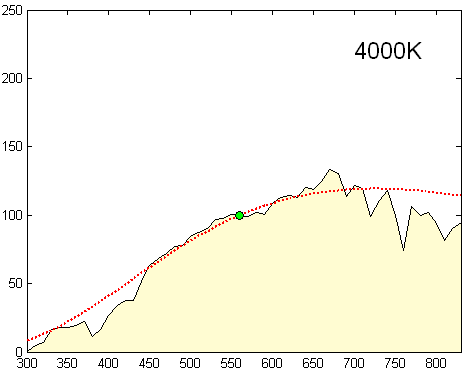I've always been someone who tries to get the best, most accurate picture from my TV's, but over the many years that I've been using HD (and now 4K) sets I always made one deviation from the general rules of thumb regarding TV calibration: I tended to prefer Normal or neutral color temperature over Warm as my starting point.
Yes, for so long I was one of those people who couldn't even fathom how people could see a TV using a warm color temp and think that it looked like anything other than a red- or yellow-tinted mess. Whites looked cream-colored at best, and every other color seemed to lose contrast from those around it as this blanket of red tinge fell over everything. I'd see people saying that your eyes just need to adjust, but I never paid them any heed.
Until now. It turns out I was missing one key ingredient when it comes to switching to a Warm color temperature for my game/film consumption on my main TV, and that was white balancing to get rid of the red shift that came with the Warm setting. Luckily both of my TCL R617's allow for an 11-point white balancing via the Roku app on my phone, and I also made use of TCL's iPQ Mobile Calibration app to hone in on the best white balance values to result in a stunningly accurate and beautiful picture.

Gimme that 6500K white point bay-beeeeeeee
Make no mistake, on a lot of TV's the default Warm setting will be too red, orange, yellow, etc. But starting from Warm and then white-balancing from there is truly a revelation, and now all other Normal (or cooler) screens that I come across in daily life basically blind me with their garish, icy hues. It's honestly kind of annoying now since my eyes are becoming much more sensitive to this difference between my main TV's and virtually every other screen that I come across at friends' houses, their phone displays, etc.
Before I was just living my life in blissful ignorance since the screens that I used the most were just as neutral/cold as most others, but now I can't go back. I can't unsee the more natural skin tones, eye-pleasing soft whites, and complete absence of crushed details in dark/bright areas.
Have any of you undergone this transformation, specifically when it comes to your main gaming TV?
PS - It was playing TLOU2 in HDR that sent me down this rabbit hole after noticing that switching to Warm revealed some details in the game's really dark interiors that were being crushed/lost by my HDR video settings, which included a Normal color temp at the time.
Yes, for so long I was one of those people who couldn't even fathom how people could see a TV using a warm color temp and think that it looked like anything other than a red- or yellow-tinted mess. Whites looked cream-colored at best, and every other color seemed to lose contrast from those around it as this blanket of red tinge fell over everything. I'd see people saying that your eyes just need to adjust, but I never paid them any heed.
Until now. It turns out I was missing one key ingredient when it comes to switching to a Warm color temperature for my game/film consumption on my main TV, and that was white balancing to get rid of the red shift that came with the Warm setting. Luckily both of my TCL R617's allow for an 11-point white balancing via the Roku app on my phone, and I also made use of TCL's iPQ Mobile Calibration app to hone in on the best white balance values to result in a stunningly accurate and beautiful picture.

Gimme that 6500K white point bay-beeeeeeee
Make no mistake, on a lot of TV's the default Warm setting will be too red, orange, yellow, etc. But starting from Warm and then white-balancing from there is truly a revelation, and now all other Normal (or cooler) screens that I come across in daily life basically blind me with their garish, icy hues. It's honestly kind of annoying now since my eyes are becoming much more sensitive to this difference between my main TV's and virtually every other screen that I come across at friends' houses, their phone displays, etc.
Before I was just living my life in blissful ignorance since the screens that I used the most were just as neutral/cold as most others, but now I can't go back. I can't unsee the more natural skin tones, eye-pleasing soft whites, and complete absence of crushed details in dark/bright areas.
Have any of you undergone this transformation, specifically when it comes to your main gaming TV?
PS - It was playing TLOU2 in HDR that sent me down this rabbit hole after noticing that switching to Warm revealed some details in the game's really dark interiors that were being crushed/lost by my HDR video settings, which included a Normal color temp at the time.


